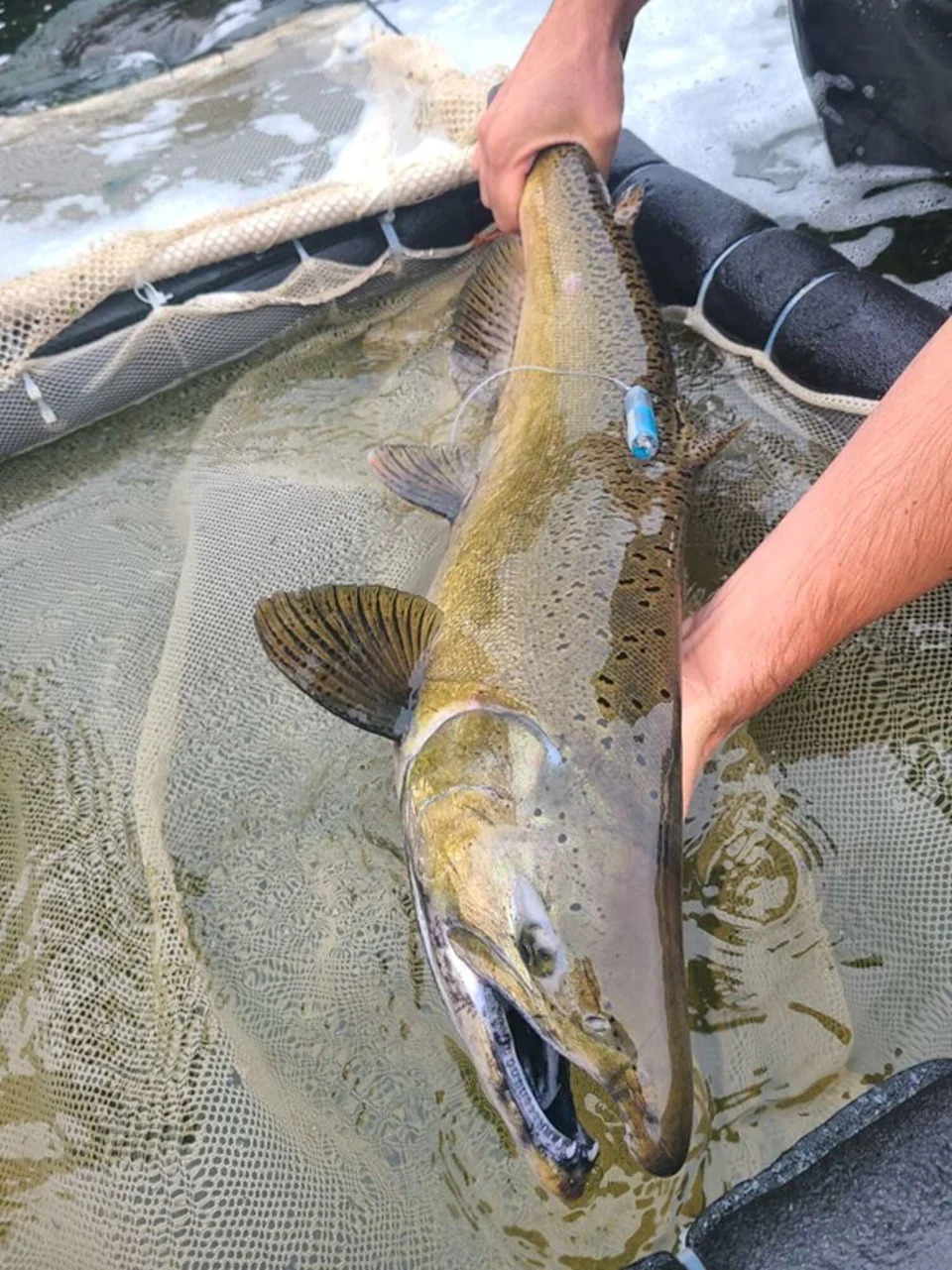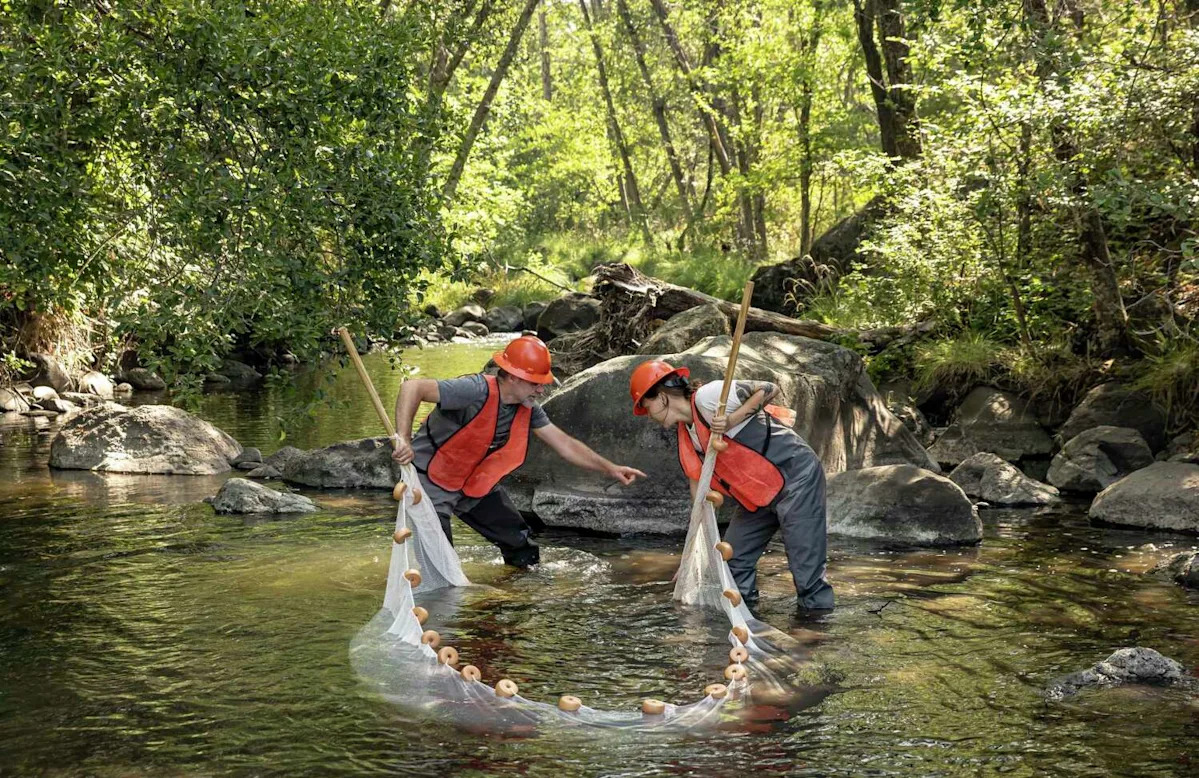Salmon on the Klamath River have crossed a major threshold a year after four dams were removed along the California-Oregon border, with the fish reaching the river’s headwaters for the first time in more than a century.
Oregon wildlife officials said Friday that multiple salmon were observed in Upper Klamath Lake, as well as its major tributaries, which confirms the 300-mile migration of salmon from the Pacific Ocean in Northern California to their historical spawning grounds in southern Oregon.
The fish had been kept from going upriver by the now-demolished dams since the early 1900s. Concerns had persisted that two existing dams farther upstream would continue to hamper fish passage. However, at least a portion of this year’s fall run of chinook salmon is now known to have made it past these obstacles.
“It’s a true blessing,” said William Ray, Jr., chair of the Klamath Tribes, which detected salmon along their tribal lands on the lower Williamson River near the Oregon community of Chiloquin in the upper Klamath Basin earlier this month. “We haven’t had (salmon) here since 1909. It’s a time for us to heal and reflect on our families and leaders who fought so hard to get them here.”
The $500 million dam-removal project on the Klamath River, considered the largest in U.S. history, was done with the goal of restoring the vast Klamath watershed to its natural splendor. The return of salmon was the benchmark for success.
A handful of tribes in the region, all of which see salmon as sacred, led the decades-long push for the dam deconstruction. The owner of the hydroelectric facilities, Portland-based PacifiCorp, agreed to remove the dams because they were outdated and costing more to maintain than they were worth. The states of California and Oregon helped underwrite the effort.
The dams, and the reservoirs they impounded – three in California and one in Oregon – did not provide water supplies nor flood control. They did provide boating and other recreational activities.
Within weeks of completion of the dam removal last fall, chinook salmon were observed migrating through the footprints of the former hydroelectric facilities. Because of the turbid waters temporarily caused by the demolition and years of declining salmon numbers, it was unclear how much success the fish would have moving upriver.
Only last month was a salmon observed getting past the still-existing Keno Dam in Oregon, where questions had remained about whether fish could climb an old fish ladder there. On Oct. 6, another salmon was detected scaling the fish ladder at Link River Dam, the last of the river’s remaining dams.
In the following days, salmon were confirmed pushing across the nearly 30-mile-long Upper Klamath Lake to such tributaries as the Williamson and Sprague rivers.
“What we’re seeing now is incredibly encouraging and the result of strong collaboration among state and federal agencies, tribes and conservation partners who have all been working towards this moment for an incredibly long time,” said Mark Hereford, fisheries reintroduction project leader for the Oregon Department of Fish and Wildlife, in a statement.

A chinook salmon on the Klamath River is tagged for monitoring. Salmon have now made it past the two dams on the river in Oregon; dams lower on the river were removed in recent years. (Oregon Department of Fish and Wildlife)
The salmon population in the Klamath Basin is estimated to be less than a tenth of what it was historically. The hope is that this new access to ancestral waters will boost reproduction and ultimately fish numbers.
Efforts to restore the watershed saw a setback recently, with the Mid Klamath Watershed Council announcing that seven federal grants worth $2.1 million had been terminated by the Interior Department. Some of the money would have gone toward monitoring salmon and improving fish habitat in the basin.
This article originally published at Salmon reach headwaters for first time in a century after California dam removal.

